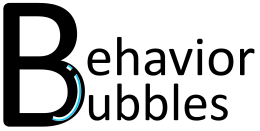What is ABA?
Many studies have shown that Applied Behavior Analysis (ABA) is one of the most empirically validated treatments for individuals with autism (Larsson, 2012; Schreck & Miller, 2010). ABA is a science that helps us understand how learning occurs. It looks at how behavior works and can be modified according to what occurs in the environment. ABA helps us to increase functional behaviors and/or decrease inappropriate maladaptive behaviors by providing the individual a more functional alternative for the function of the problem behavior through interventions such as but not limited to: Discrete Trial Training, Functional Communication Training, and Antecedent-Based interventions (Lindgren & Doobay, 2011). ABA can be utilized to improve language skills, increase functional communication, improve attention, focus, adaptive living skills, social skills, play skills, and much more.
Benefits of ABA
Though ABA can be utilized with people of all ages, it is especially effective for younger children below the age of 5. This is commonly known as Early Intensive Behavior Intervention (EIBI), or Intensive Behavior Intervention (IBT).
Studies have shown that intensive behavior intervention (IBT) for young children with autism improves key skills such as language, adaptive functioning, cognitive skills, and milder autism severity (Flanagan, et al., 2012; Eldevik, et al., 2010). IBT accelerates rates of skill acquisition and allowed the children to match or exceed the normal rate of development per year, allowing them to close the gap between themselves and their typically developing peers (Howards, et al., 2005). This allows a significantly positive effect on long-term outcomes for the children (Lindgren & Doobay, 2011).
Additionally, as seen from research conducted by McPhilemy and Dillenburger (2013), parents who participated in ABA-based interventions stated that ABA has been shown to improve their child’s communication skills (i.e. requesting, improved eye contact, conversation, etc.), behavior (i.e. increased focus, improved attention, decreased self-harming, etc.) and independence (i.e. toilet training, play skills with siblings, improved academic skills, etc.). Improvements in family life and decreased stress levels were also reported. This prepares the individuals who received ABA therapy to be more independent and allows them to achieve a higher quality of life in the future.
Factors to Consider in an ABA Program
Treatment should begin by assessing the individual’s strengths and weaknesses. This can be done via interviews, observation, and assessments. As each individual is unique, the intervention plan should be individualized based on the individual’s needs (Lindgren & Doobay, 2011).
It is important that the following factors be present when implementing an ABA program properly (Dionne, et al., 2016; Leaf, et al., 2015; Lindgren & Doobay, 2011; Reichow, et al., 2018):
- Intensive intervention (i.e. 25-40 hours per week) – For IBT Programs
- Evidence-based approaches/ Interventions
- Proper measurement and documentation (i.e. monitoring progress over time, adjusting program as needed)
- High degree of structure (i.e. visual schedules, etc.)
- Well trained staff (i.e. supervisors, therapists, etc.)
- Frequent and consistent supervision
- Consistency of staff
- Good availability of resources
- Addressing the core deficits of autism (i.e. social, communication, play, etc.)
- Utilizing a functional approach to challenging behaviors
- Programming for generalization and maintenance
- Parent participation
- Collaboration with other stakeholders (i.e. parents, schools, centers, service providers, etc.)
I hope this article clarifies what ABA is and what parents should look out for when seeking a service provider. Feel free to comment should you have any questions!
References
Dionne, C., Joly, J., Paquet, A., Rousseau, M., & Rivard, M. (2016). Organizations’ choices when implementing an early intensive behavioral intervention program (EIBI). Education Sciences & Society, 7(2), 150-171. Doi: 10.3280/ess2-2016oa3934
Eldevik, S., Hastings, R. P., Hughes, J. C., Jahr, E., Eikeseth, S., & Cross, S. (2010). Using participant data to extend the evidence base for intensive behavioral intervention for children with autism. American Journal on Intellectual and Developmental Disabilities, 115(5), 381-405. Doi: 10.1352/1944-7558-115.5.381
Flanagan, H. E., Perry, A., & Freeman, N. L. (2012). Effectiveness of large-scale community-based intensive behavioral intervention: A waitlist comparison study exploring outcomes and predictors. Research in Autism Spectrum Disorders, 6(2), 673-682. Doi: 10.1016/j.rasd.2011.09.011
Howard, J. S., Sparkman, C. R., Cohen, H. G., Green, G., & Stanislaw, H. (2005). A comparison of intensive behavior analytic and eclectic treatments for young children with autism. Research in Developmental Disabilities, 25, 359-383. Doi: 10.1016/j.ridd.2004.09.005
Larsson, E. V. (2012). Applied behavior analysis (ABA) for autism: What is the effective age range for treatment? Lovaas Institute, http://childsplayautism.com/wp-content/uploads/Effetive-Treatment-Range-1.pdf
Leaf, J. B/, Lead, R., McEachin, J/. Taubman, M., Ala’i-Rosales, S., Ross, R. K., Smith, T., & Weiss, M. J. (2015). Applied behavior analysis is a science and, therefore progressive. Journal of Autism and Developmental Disorders, 46(2), 720-731. Doi: 10.1007/s10803-015-2591-6
Lindgren, S., & Doobay, A. (2011). Evidence-based interventions for autism spectrum disorders. https://uihc.org/ucedd/sites/uihc.org.ucedd/files/Evidence-Based%20Interventions%20for%20Autism%20Spectrum%20Disorders.pdf
McPhilemy, C., & Dillenburger, K. (2013). Parents’ experiences of applied behavior analysis (ABA)-based interventions for children diagnosed with autistic spectrum disorder. British Journal of Special Education, 40(4), 154-161. Doi: 10.1111/1467-8578.12038
Reichow, B., Hume, K., Barton, E. E., & Boyd, B. A. (2018). Early intensive behavioral intervention (EIBI) for young children with autism spectrum disorders (ASD). Cochrane Database of Systematic Reviews, Issue 5. Art. No.: CD009260. Doi: 10.1002/14651858.CD009260.pub3
Schreck, K. A., & Miller, V. A. (2010). How to behave ethically in a world of fads. Behavioral Interventions, 25, 307-324. Doi: 10.1002/bin.305


Wow I am in awe of your studying materials, all I can really say that tonight was very special . A learning experience that full fed my hunger for the children with autism along with my career path studies to work with Autism. I can never thank you enough for the wisdom and knowledge along with understanding that you have imparted into me. Thank you so much .Zarlie W.
LikeLike
Thank you for your work! It helps a lot!
LikeLike